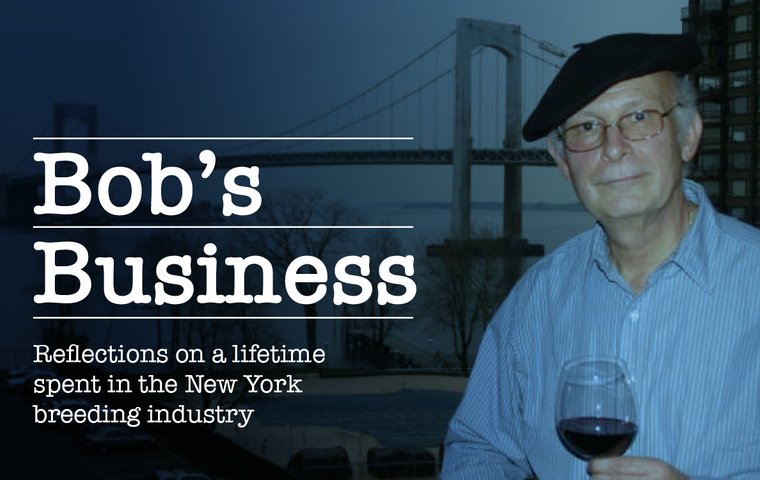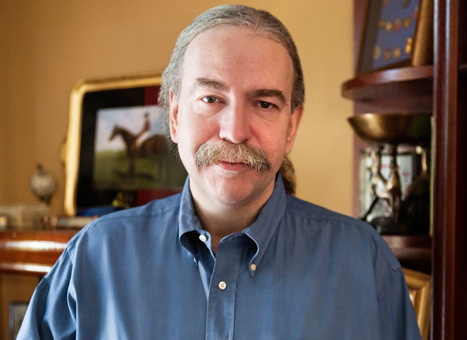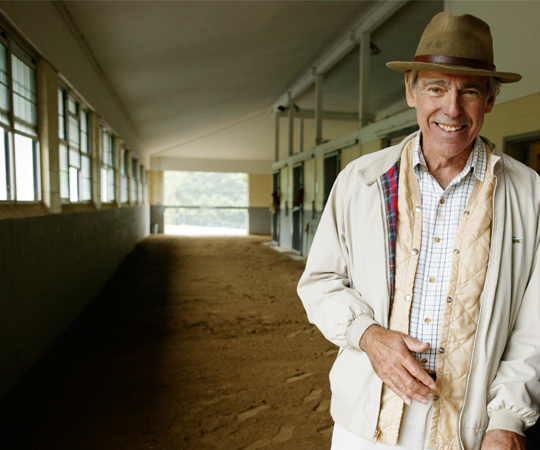
In the fifth article of his series detailing his involvement in the formation of the New York breeding program, Robert D. Fierro details how he ended up taking a number of pivotal jobs in the 1980s and 1990s
As we mentioned in our previous article, the research your correspondent put into developing this series for Thoroughbred Racing Commentary generated the conclusion that the year 1981 was a watershed moment in the development of the New York Thoroughbred breeding program. As acknowledged previously, yours truly was lucky enough to be part of the critical path links.
Those links were fortuitous and serendipitous from the start. It began with our first invitation to the annual New Year’s Night party held by Steve Crist (remember him?) in his family’s West Side apartment.
 Steve had recently returned from a whirlwind group tour of Europe that included attending the races in many venues, including the Prix de l’Arc de Triomphe at Longchamp. He’d invited several horse people he’d met on that tour to the party including Leo Veitch, brother of Hall of Fame trainer Sylvester and uncle of John, who had guided Alydar to fame.
Steve had recently returned from a whirlwind group tour of Europe that included attending the races in many venues, including the Prix de l’Arc de Triomphe at Longchamp. He’d invited several horse people he’d met on that tour to the party including Leo Veitch, brother of Hall of Fame trainer Sylvester and uncle of John, who had guided Alydar to fame.
Along for the festivities was one Charles Hayward, whom you have no doubt heard about, and several of Steve and Charlie’s friends from the publishing world – Charlie was president of a major publishing house at the time; now he's president at TRC.
Omar Khayyam
We all met for the first time and, along with Leo Veitch, returned for a couple more of Steve’s parties with no real ties. Two years later, however, we came together for a party of our own which involved a New York-bred colt by name of Omar Khayyam
As it turned out, the success of Omar Khayyam on the racetrack, where he was a Graded-placed stakes winner and earned state-bred championship honors, added to your correspondent’s credibility beyond his acknowledged experience in marketing, financial analysis and pedigree research.
Part of the boost in credibility was due to the story of Omar Khayyam turned out to be, as they say in journalism, ‘good copy’. Find out more about him here in another piece I've written.
In retrospect, then, whatever accomplishments I achieved over the next 10 years in helping to restructure and build the New York program as an officer of NYTB would have never happened if it were not that Ray Karlinsky said: “Sit down!”
Keynote speaker
Along with my efforts for New York owner-breeders Ray and Arthur Levien, the early 1980s bore fruit from my previous decade as a racing and financial writer and author. Somehow, that caught the attention of the American Horse Council (AHC) which in 1982 invited me to be the keynote speaker at the first industry convention about simulcasting.
Speaking to about 500 racing executives, virtually all white men, I projected how the game would chang e in the next decade – you could hear their jaws hit the ground in disbelief at the end. But it turned out to be prescient, especially after the speech was widely reprinted in the industry publications.
e in the next decade – you could hear their jaws hit the ground in disbelief at the end. But it turned out to be prescient, especially after the speech was widely reprinted in the industry publications.
This was followed two years later when I was a featured speaker at another AHC seminar examining investment opportunities in the Thoroughbred industry on Wall Street. That speech was also widely circulated and had the effect of slowing down the mad rush of Thoroughbred investment vehicles for the stock market.
This all caught the attention of John Hettinger and others who were attempting to create a major stallion station in New York. After several discussions I proposed to develop a survey of New York breeders about the concept and what kind of stallions they wanted for their mares and the results were very surprising.
Bottom line: no consensus. In fact, no real clue about stallion potential. That basically ended the idea of a major stallion station in New York.
It occurred to me that the best way to figure out which stallion prospects might be best would be to track the results of the runners by the stallions already at stud.
Thus, I began a monthly newsletter, the New York Stallion Report, which compiled racing records of runners at both NYRA tracks and nationwide. One result of this publication was that Bloodstock Research (BRIS) became interested in developing a stallion ranking system for individual states – this occurred in 1986 and was eventually expanded to all states by the Jockey Club.
By the mid-1980s I was invited to join the board of the Eastern New York Thoroughbred Breeders (ENYTB), one of two regional associations of the state-wide New York Thoroughbred Breeders (NYTB), the other being the Genesee Valley Breeders in Western New York.
Almost unanimously
The board authorized me to develop a monthly newspaper, the New York Thoroughbred Report, the first issue of which was published in July 1989. I was elected president of ENYTB in December of that year and we consolidated the two regionals into one state-wide organization that carried more clout with the regulators and politicians.
In 1992 I was elected president of NYTB, and things began to hit the fan. Skirmishes were underway between breeders whose farms were suffering because of a lack of mares, which they blamed on the breed-back rule at the time; and major stallion owners who feared loss of income from stallion fees were almost unanimously opposed to changes.
The “almost unanimously” became the pivotal position, sparking two years of spirited dialogue, political intrigue and along the way a major crisis which changed the industry for good, which will be detailed in our next chapter.
• Visit the New York Thoroughbred Breeders (NYTB) website
Bob's Business #4: Across the threshold and before the honeymoon
Bob's Business #3: Serendipitous and fortuitous meetings with the movers and shakers
Bob’s Business #2: A lot more than fifteen miles on the Erie Canal
Bob’s Business #1: How I met Steve Crist – then serendipity took over
View the latest TRC Global Rankings for horses / jockeys / trainers / sires


